Guest post by Sarah Gerhardt
Mulching is a simple way to increase the quality of the soil in your garden and to contribute to the overall health of it. Apply a layer of bulky material to a bed or around the base of a plant to create a mulch. Support the soil and it can in turn support healthy plants.
There is a large variety in the types of mulches and their purposes and benefits. Organic mulches include garden compost, bark chip or a green manure, whereas cardboard, polythene and gravel are inorganic mulches.
Depending on the type and material used, mulches can serve several purposes. They may improve and/or condition the soil, suppress weeds and deter some pests. Most of them will retain warmth and moisture and protect the roots of plants.
Organic Mulches
Let’s take a closer look at some types of organic mulches and their functions.
Farmyard manure is essentially animal poop from farmyard animals like cows or horses. It is usually mixed with straw which is ideal as it provides good texture.
Farmyard manure can absorb and retain large volumes of moisture. It is rich in nutrients and increases soil fertility while it is broken down by the action of soil organisms. Always make sure farmyard manure is well rotted before using it as a soil additive. Fresh manure will release ammonia as it decomposes which can be harmful to plants.
While the manure is rotting down and getting ready to be used in the garden it should be covered to prevent nutrients from leaching out. One downside to farmyard manure is that it has to be brought in unless you keep livestock.
A great type of mulch that you can make yourself in the garden is garden compost made from food and garden waste. This is an ideal way to recycle plants in the garden. It saves waste and the cost of buying in material.
The food and garden waste must be well broken down so it will take some time to produce a good quality compost. Poorly composted material can be a source of weeds, pests and diseases. Use a hot composting system for making a quicker, high-quality compost without weeds and pathogens in the soil. Hot composting comes with the added cost of a hot composting box. These boxes are a lot more expensive than a box for cold composting which you can make yourself or buy for little money.
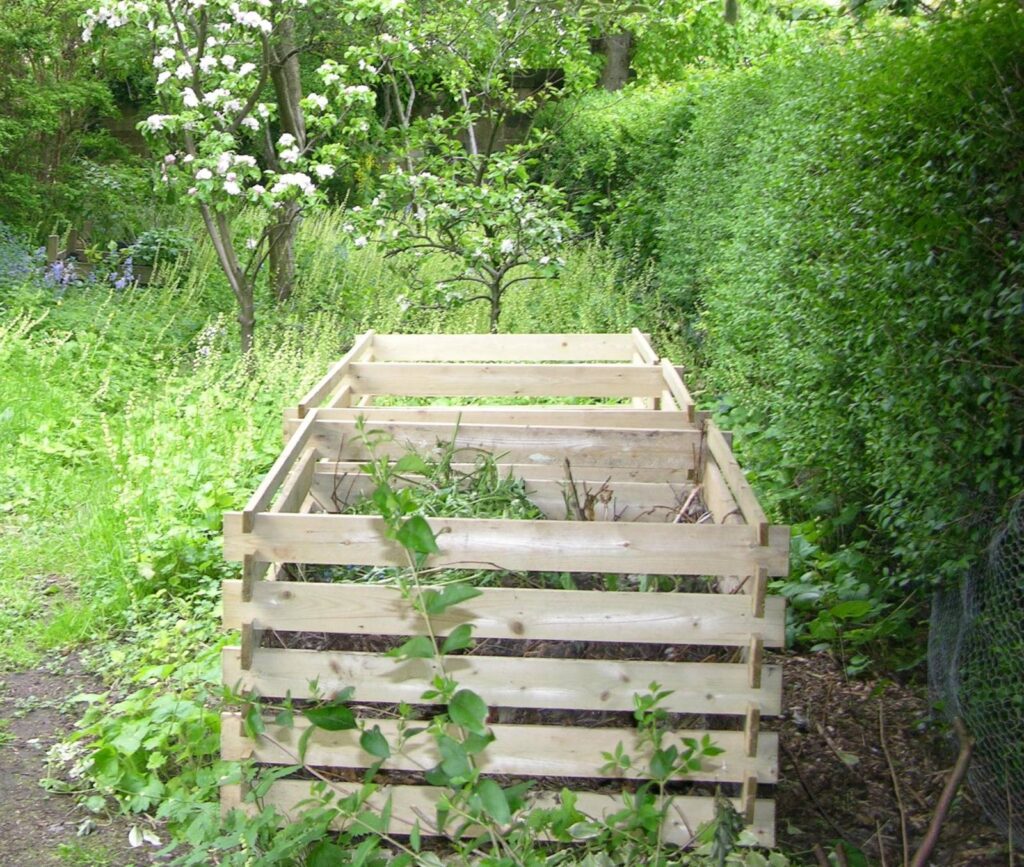
If you would like to obtain safe and weed-free compost for mulching and do not want to get a hot composting box, then buying composted green waste could be a good option. It is made from green and woody materials collected from local parks and gardens. The green waste is composted using hot methods and can be used both for planting and mulching.
While it has to be brought in it is a good way of reducing landfill. Caledonian Horticulture’s Green Goodness makes a great mulch based on composted green waste and woody materials
Another option for a mulch that you can make yourself in your garden is leaf mould. It consists of decomposed leaves. Leaf mould is generally slightly alkaline and low in nutrients. This makes it ideally suited to woodland gardens or plants grown under the shade of trees (for example Cyclamen spp., Erythronium spp. and Trillium spp.).
Leaf mould is simple to make and can be used in several ways. You can incorporate it into the soil as a soil conditioner or lay it on as a top-dressing to form raised leaf mould beds. It is also good for protecting the crowns of herbaceous plants over winter if laid on top as a mulch.
However, you will need some time to make leaf mould and need to have a sufficient amount of leaves. Also bear in mind that leaf mould may harbour pests and diseases if the leaf material used was affected.
Mushroom compost is compost left over from mushroom farming. It is usually made from composted straw and can sometimes be obtained for little money from a local mushroom farm. It may also be available from soil suppliers and garden centres.
The compost is removed from the mushrooms once they have completed their growing cycle and is then sterilised so that mushroom spores will not continue to grow. Mushroom compost usually contains chalk which makes it alkaline in nature. Use it in moderation and alternate it with farmyard manure or compost to avoid a build up of chalk in the soil.
Mushroom compost is best suited to acidic soils if an increase in pH is desirable. For example, it can work well in the cabbage plot where a more alkaline soil can protect plants such as cauliflower, turnip and Brussels sprouts from clubroot. Do not use mushroom compost on neutral or alkaline soils as it will make them excessively alkaline. Also avoid using it on ericaceous plants such as Rhododendron and Camellia because they require their soil to be acidic for optimal nutrient uptake.
Chipped bark is a by-product of timber processing. It is available in a variety of grades from coarse to fine. Check for the FSC mark to ensure it comes from a sustainable source.
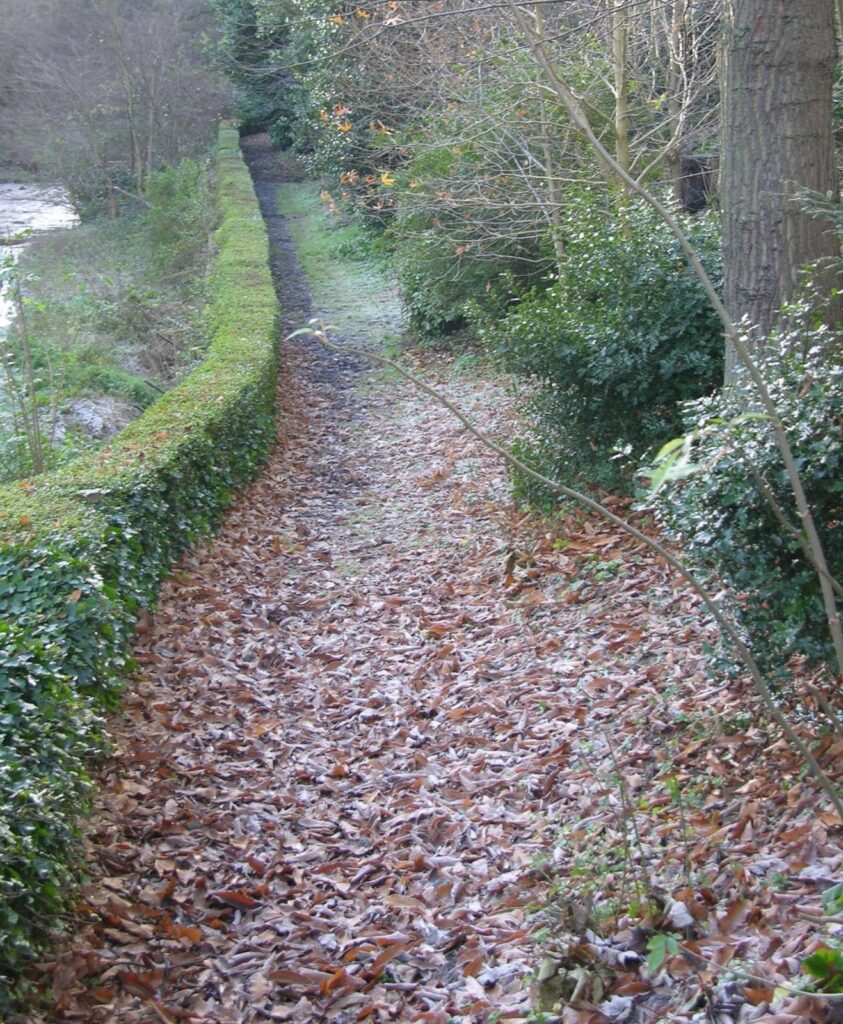
Lots of potential for making leaf mould.
Chipped bark looks attractive as a mulch and is a good use of a waste product. It should not be dug in as it may take nitrogen out of soil while breaking down. This is not a problem if applied as a top dressing. Always ensure that the bark is free from honey fungus before you use it. Chipped bark is a great mulch for fruit trees. Ensure to leave a small circle around the base of trees when applying. Be mindful that a thickly applied chipped bark mulch could block water from penetrating the soil.
Take a look at Caledonian Horticulture’s Decorative Bark if you are considering using chipped bark in your garden.
Bags of compost or bark mulch can be heavy. A lightweight alternative is composted straw. It is a by-product of crop production and can be bought as straw mulch with minerals added (so called ‘Strulch’). Straw with added minerals makes a long-lasting mulch that also works as a soil improver. Straw mulches tend to look a bit messy and the straw should not be dug in or else it may cause a drop in nitrogen levels.
A green manure is a clever way of using live plants as a mulch. Plants that capture nutrients such as nitrogen are planted on bare ground. When the plants are starting to reach maturity they are dug back into soil to increase fertility and improve soil structure. The bed can be planted three to four weeks after the green manure crop has been dug in. Mustard greens (Brassica juncea), radish (Raphanus sativus), perennial ryegrass (Lolium perenne), lupin (Lupinus spp.) and white clover (Trifolium repens) all make great green manure crops.
Green manures have many advantages. They prevent the loss of nutrients to leaching and compaction of the soil from rain. And less topsoil is lost to runoff. For food growers a green manure is a great way of replenishing the soil between crops.
However, green manures need space, time and effort. The green manure crops should not be left to go to seed or they might take over the bed. Green manures are best suited to beds that are planted annually such as a vegetable patch.
If you grow vegetables you might like to look into crop debris as a form of mulch. Crop debris is the leftover material after a crop is harvested. For example, this could be the stalks from your pea plants or stems of Brussels sprouts. Simply cut them back and leave them in situ.
This can be a simple homemade mulch that saves time and effort. It can also be dug in and the nutrients from the plants are returned to the soil. However, any pests and diseases present in the plants will remain in the soil. Use crop rotation to combat the problem.
Inorganic Mulches
Inorganic mulches are not directly derived from plants. They do not add any nutrients to the soil and do not improve its health and structure. On the other hand they usually do a good job of suppressing weeds, better so than some organic mulches. Some of them look pretty, too!
Let’s take a quick look at some inorganic mulches and how they are used.
Polythene sheets in clear or black can be used to cover the soil and warm it at the start of the growing season. It can be cut which allows you to lay it around your plants. However, careful fertilising and watering is necessary. Polythene is not particularly aesthetically pleasing and will not allow for an exchange of air and water in and out of the soil. Clear polythene will not suppress weeds.
There are various types of woven fibres that can be used as an alternative to Polythene. Woven plastic fibres such as Mypex are a popular choice. These fibres allow for water and air to pass through them. They can be topped with a more attractive mulch such as bark chip or gravel. With extra mulch on top they make a good weed suppressant.
Gravel (small stones) can be a very decorative mulch. Gravel is a good weed suppressant and an even better one when underlain with Mypex. It is a popular choice in alpine and rock gardens where one of its main purposes is to keep water away from the plants.
Recycled glass chips can be used similarly to gravel. They are decorative and make a decent weed suppressant in conjunction with Mypex.
Hopefully this has given you a good idea of some of the most common mulches available. Inorganic mulches usually do a good job of suppressing weeds and retaining moisture but organic mulches often have the added benefits of feeding the soil and improving its structure.

Clover makes a great green manure and is loved by bees.
Mulching is best done in mid- to late spring when there is no risk of frost anymore and annual weeds have not yet germinated. It can also be done in autumn as herbaceous plants are dying back.
Remove any perennial weeds and ensure the soil is moist when applying the mulch. For organic mulches a layer of around 5 – 7.5 cm thick is recommended.
Do not pile it high close to the stems of plants and leave a mulch-free ring around larger shrubs and trees. Mulch may stay damp and cause rotting if sitting against a woody stem. Do not mulch plants that like dry, rocky conditions such as alpines and a lot of Mediterranean plants such as sage and lavender.
Applying an organic mulch to your beds once or twice a year can greatly improve the soil in your garden and thereby improve the health of your plants. It can also save you time because there will be less weeding, feeding and watering to do. Give your garden an annual mulching and see it flourish over time.
About The Author
Sarah Gerhardt is a gardener, linguist and punk musician based in Edinburgh. She was head gardener at the Dean Gardens, Edinburgh for 9 years and runs her own gardening business Gerhardt’s Garden Service.
Find out more via her Linktree: https://linktr.ee/gerhardtsgardenservice
-
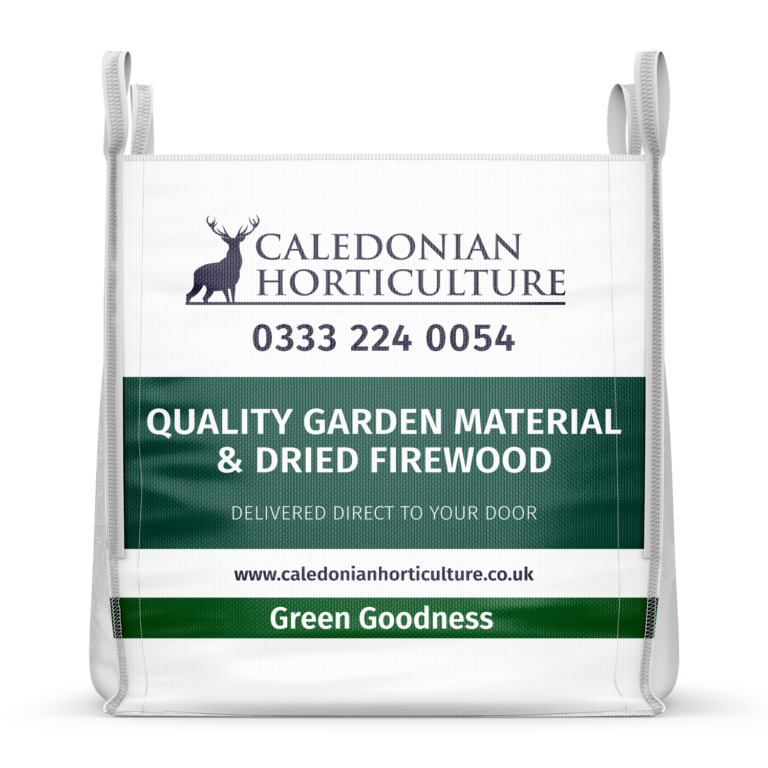 Builder’s Bag Green Goodness£52.00 inc VATRated 4.90 out of 5 based on 199 customer ratings
Builder’s Bag Green Goodness£52.00 inc VATRated 4.90 out of 5 based on 199 customer ratings -
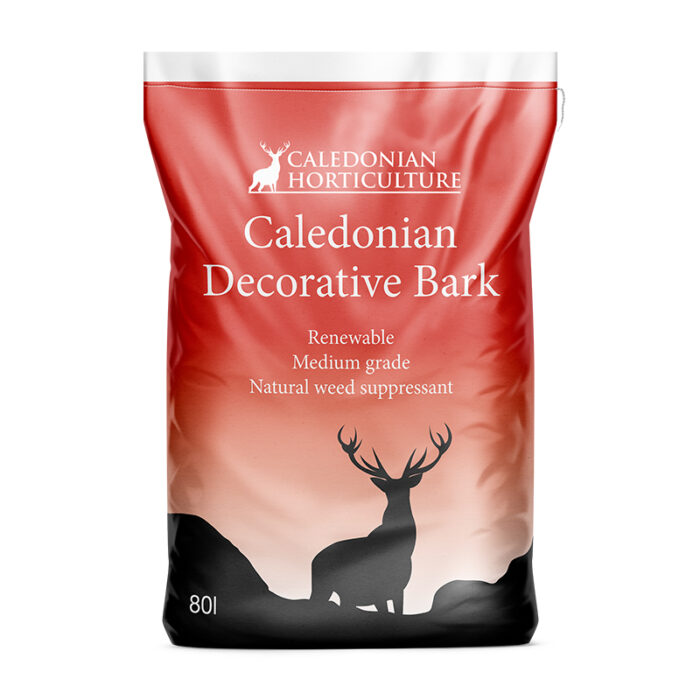 80L Caledonian Decorative Bark£8.50 – £9.50Price range: £8.50 through £9.50 inc VATRated 4.86 out of 5 based on 14 customer ratings
80L Caledonian Decorative Bark£8.50 – £9.50Price range: £8.50 through £9.50 inc VATRated 4.86 out of 5 based on 14 customer ratings -
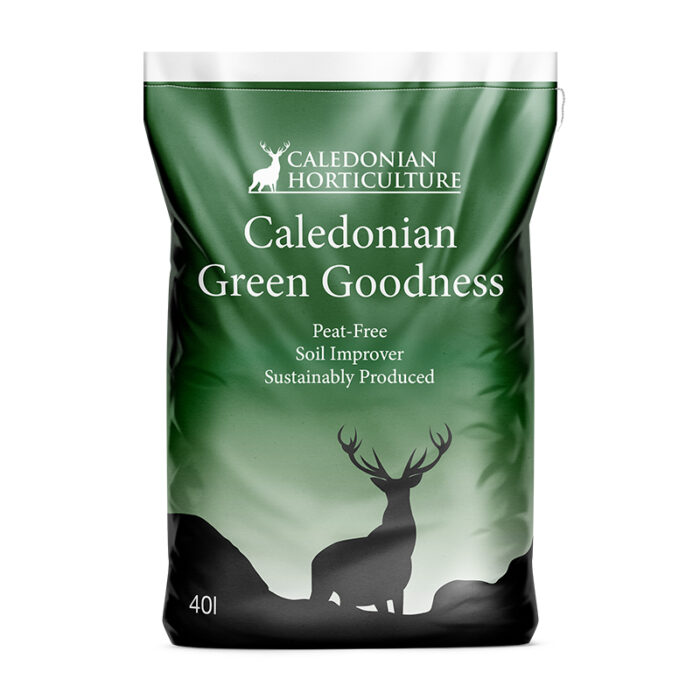 40L Green Goodness£3.50 – £4.50Price range: £3.50 through £4.50 inc VATRated 4.97 out of 5 based on 73 customer ratings
40L Green Goodness£3.50 – £4.50Price range: £3.50 through £4.50 inc VATRated 4.97 out of 5 based on 73 customer ratings



